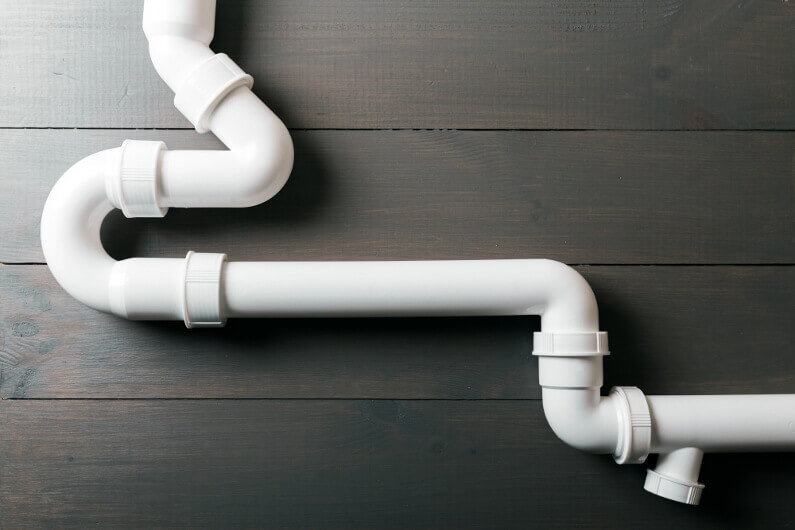Suburban Plumbing Blog
Plumbing Articles from Orange County, CA.
What Is a Plumbing Vent and Why Is It Important in Your Plumbing System?

Behind your walls and under your floors is a network of wastewater drainage pipes that you rely on for draining your sinks and showers. Did you know the key to keeping your drains flowing smoothly is your home’s plumbing vent system?
Not only does your drainage ventilation keep your drains open, but it also protects your family from dangerous sewer gases. Read more about plumbing vents, and why they’re so important for your home’s plumbing system.
Why Are Plumbing Vent Pipes Important?
Your drainage vents connect to your sink, tub, and other household drains. The air vent pipe runs up into your attic where it goes through the roof into the open air. Drainpipes connect directly to a main or secondary stack or joined to a re-vent that travels up and across to a stack vent.
If you didn’t have vent pipes, the wastewater going down your drains would empty your traps because of a vacuum effect. When this happens, toxic sewer gases can seep into your house.
So, you want some of the draining water to stay in the trap while the rest goes down the drain. Your plumbing air vent lets air stay between the draining water and the trap. This keeps water in the trap pipe.
If there’s a problem with the open airway of your drainage ventilation, it can cause the water to slow or stop draining.
Can Drains Work Without a Vent?
When water flows down your drains, gravity carries it into your sewer pipes. If you have downward sloped pipes, your drains will work because the air in your room works as a vent pipe.
The problem is that if you used this drainage method, air can travel up your drain pipes into your home. This air brings stinky sewer gases into your rooms. Vent pipes stop this from happening.
How Does a Typical Drain Work?
Along with drainage vents, your plumbing system also needs traps under every drain. Traps are P-shaped pipes. They hold water, which blocks odor and gases from coming into your home.
If you have a drain that you don’t use very often, the water in the trap can evaporate. When this happens, you’ll notice a sewer smell in the room. This can also happen if you don’t have a plumbing vent.
As the water flows through your drain pipes, it creates a siphon effect or negative pressure. This pushes air in front of it causing positive pressure. This pulls the water out of the trap. Plumbing vent pipes neutralize negative and positive pressure.
What Causes Plumbing Air Vent Problems?
Several factors can cause problems with your drainage ventilation leading to potentially hazardous wastewater overflows, dangerous gases, slow drains, and recurring gurgling and clogged pipes.
These are some of the common problems that cause drainage vents to malfunction:
Improper Layout and Installation
If you try to layout and install your drainage system and vents yourself or have an inexperienced person do it for you, it can lead to serious drainage problems. Pipe size varies depending on usage.
The routes through your wall framing and pitch of your drains also have a large impact on your drains’ performance. In fact, many people think they’re drains are clogged when it’s really a vent issue.
Installing pipes at the wrong pitch, even just one-quarter inch can cause problems. Even subtle differences with drain outlets and inlets have an effect on drainage.
When you’re installing or repairing your drains and drainage vents, always use professional plumbing services that understand the plumbing codes, rules, and restrictions for your area.
Frozen Plumbing Vents
The plumbing vent stack that comes out of your roof can freeze during extremely cold temperatures. The water vapor inside the air vent freezes, which blocks off the top of the stack.
If this happens, it causes an imbalance in the pressure of your drains, and the water in your traps gets sucked out. Also, the sewer gases and toxic fumes like hydrogen sulfide, ammonia, and carbon monoxide can enter your home.
To prevent frozen vent pipes, go into your attic and wrap insulation around the vent pipe that goes to your roof. You can also open your attic hatch during frigid conditions to allow some warm air to enter the attic.
Damaged Vent Piping
Even a small leak from cracks and corrosion can cause your vent pipes and plumbing system to fail. This allows smells to enter your home. It can also cause gurgling and slow drainage.
Contact a plumber to help you locate any loose fittings, damage or cracks in your vent piping.
Clogged Plumbing Air Vent
Just like the frozen vent mentioned previously, a clogged vent pipe also causes odors and slow drains. Leaves, debris, birds, and mice can clog your vent pipe. To clean your vent, you need an auger or snake that twists through the vent. This can either push out the clog or pull it out.
If you can’t release the clog with a snake, call a plumbing service. They use industrial-strength snakes that can remove any clog.
What Are the Types of Plumbing Air Vents?
Depending on where you live, plumbing codes can differ as far as which vent pipe you can use. Check with your local plumbing service to find out which plumbing vent pipes you can use in your home. Here are the most common plumbing ventilation options:
Vent Stack
Most homes have vent stacks, which are also known as direct vents. These are the vents that go through your roof. Depending on how many drains you have in your home, you might have several of these vents on your roof.
Wet Vent
Wet vents are both drains and vents in one pipe. Many areas have restrictions when using these vent pipes. Wet vents usually involve closely situated drains, such as a toilet and sink.
Air Admittance Valve
An air admittance valve or auto-vent is a small vent that usually connects to a sink’s drain pipe. It lets air into the drainpipe so it can keep the pressure balanced when draining. Many plumbers use auto-vents instead of running a stack vent. It uses less pipe and costs less.
Plumbing Vent Pipes and Drains Go Hand-In-Hand
To keep your drains running fast and smooth, make sure your plumbing vent is installed correctly, complies with local plumbing codes, and is damage free. This will keep toxic sewer fumes from entering your home and prevents any water overflow problems.
Contact us our licensed plumbers in Huntington Beach and Orange County, CA for all your plumbing service needs.
2 Comments
Submit a Comment
Request a Quote Now
suburban plumbing
Full Service Plumbing Orange County, CA.
Suburban Plumbing
14933 Adams Street
Midway City, CA 92655
(714) 922-3555
or Send Us an Email Here.
© 2017-2025 SuburbanPlumbingOC.com
– All rights reserved. –
Information on this website may not be re-used without prior written consent from Suburban Plumbing.
QUICK LINKS
HOME | PLUMBING SERVICES | PLUMBER NEAR ME | REVIEWS | ABOUT | COVID SAFETY | BLOG | COUPONS | CONTACT | SITE MAP
HOURS & LICENSE INFO
Monday-Friday: 8:00am to 7:00pm
Saturday: 8:00am to 5:00pm
Sunday: Closed Normal Appointments
Emergency Client Service Available
California Licensed, Bonded, Insured
C36 Plumbing Contractors License 833520





Nice bit of plumbing 101. Explains how sewer vents serve both intake and exhaust, with result of facilitating drainage while preserving water in the p trap of each plumbed fixture so as to keep sewer gases out of the house.
What can it cost to fix cast iron plumbers vent on a flat roof?